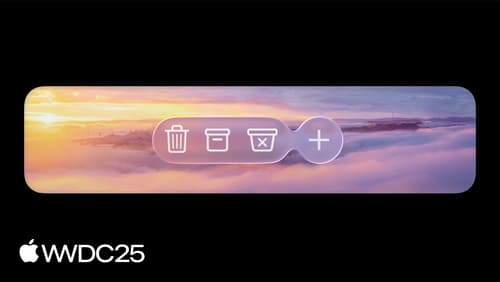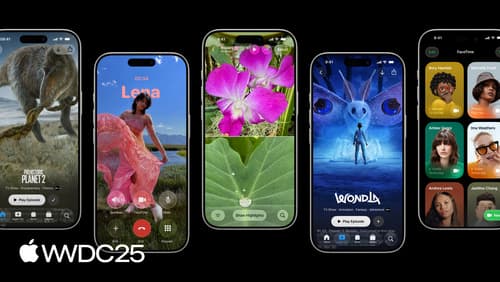glass
Asked on 2025-06-11
2 searches
The concept of "glass" in the context of Apple's WWDC presentations primarily refers to the "Liquid Glass" material, which is a new design element introduced to create a more fluid and dynamic interaction experience across Apple's platforms. Here are some key points about Liquid Glass from the sessions:
-
Design and Functionality: Liquid Glass is designed to be an interactive layer that floats above your content, providing a distinct functional layer for controls and navigation. It adapts to its environment, changing its appearance to suit the brightness of the content behind it, and can switch between light and dark modes to increase contrast.
-
Visual and Interaction Design: Liquid Glass introduces a unified design language across all platforms, seamlessly blending hardware and software. It is designed to make the experience of apps feel more organic, immersive, and fluid. The material dynamically morphs and adapts, maintaining clarity and focus within the UI hierarchy.
-
Customization and Adaptivity: Developers can customize the appearance of Liquid Glass using APIs like the NSGlassEffectView for AppKit or the UIVisualEffectView for UIKit. The material's characteristics change to simulate a thicker, more substantial material when needed, enhancing the perceived depth and legibility of the content.
-
Use Cases: Liquid Glass is best reserved for the navigation layer that floats above the content of your app. It should be used for the most important elements in your app, such as controls that belong in the top level of hierarchy.
For more detailed information, you can refer to the following sessions:
- Meet Liquid Glass (00:00:00)
- Build an AppKit app with the new design (17:30)
- Build a UIKit app with the new design (17:24)
These sessions provide insights into how Liquid Glass is implemented and how it enhances the user interface design across Apple's platforms.

Build an AppKit app with the new design
Update your AppKit app to take full advantage of the new design system. We’ll dive into key changes to tab views, split views, bars, presentations, search, and controls, and show you how to use Liquid Glass in your custom UI. To get the most out of this video, we recommend first watching “Get to know the new design system” for general design guidance.

Design widgets for visionOS
Learn how you can design beautiful widgets for visionOS 26 that blend effortlessly into someone’s surroundings. Discover how you can add depth to your widget design and customize materials, sizes, and styles for spatial computing. We’ll share how to adapt your existing widgets for visionOS, or design new widgets that feel like real objects.

Build a UIKit app with the new design
Update your UIKit app to take full advantage of the new design system. We’ll dive into key changes to tab views, split views, bars, presentations, search, and controls, and show you how to use Liquid Glass in your custom UI. To get the most out of this video, we recommend first watching “Get to know the new design system” for general design guidance.
